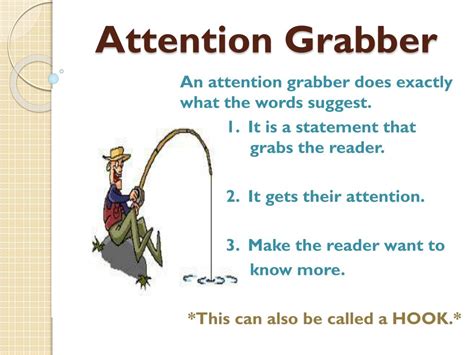In today's digital age, the ability to create compelling and captivating written content has become an essential skill for individuals and businesses alike. Whether you are a professional writer or just starting out, mastering the art of effective content creation can help you stand out in a sea of information. Through careful selection of words, structure, and tone, you can engage and persuade your target audience, leaving a lasting impression.
When it comes to writing content that truly resonates with your readers, it's all about understanding their needs, desires, and pain points. To succeed, you must develop a deep empathy for your audience and deliver valuable information that addresses their specific challenges. By doing so, you can establish yourself as a trustworthy authority and build meaningful connections.
Creating compelling content is not a one-size-fits-all approach. Each piece of content you create should be tailored to your target audience and their unique characteristics. This means understanding their preferred communication style, their level of knowledge on the subject, and any potential objections they may have. By doing thorough research and developing a deep understanding of your audience, you can create content that speaks directly to their needs and interests.
Words have the power to shape opinions, change behaviors, and inspire action. That's why using a persuasive and engaging tone in your writing is crucial. By incorporating storytelling techniques, powerful language, and emotional appeal, you can capture the attention of your readers and keep them engaged from start to finish. Remember, effective content is not just about delivering information; it's about crafting an experience that leaves a lasting impact.
The Impact of an Attention-Grabbing Title

A compelling title has immense power when it comes to capturing the interest and attention of readers. It serves as the gateway to your content, influencing whether or not someone will click and engage with your writing. Crafting a catchy headline requires careful consideration and strategic thinking, as it can make or break the success of your content.
One of the main reasons a catchy title holds such significance is because it acts as a magnet, drawing readers in and enticing them to explore further. A well-crafted headline captures their curiosity and creates a sense of anticipation, compelling individuals to click and delve into the content you've created.
Moreover, a catchy title has the ability to communicate the value and relevance of your content instantly. It serves as a quick snapshot of what readers can expect to gain from investing their time in your piece. By crafting a headline that resonates with your target audience, you can effectively communicate the benefits or solutions your content offers, encouraging engagement from the right individuals.
Additionally, in today's fast-paced digital world, where attention spans are shrinking, a catchy title can help your content stand out in a sea of information overload. With countless articles and posts vying for attention, an attention-grabbing headline can be the key differentiator that makes your content shine. It can help your piece rise above the noise, creating an opportunity for your message to be heard and remembered.
Furthermore, a well-crafted title can also play a crucial role in search engine optimization (SEO). By including relevant keywords and phrases, you can increase the visibility of your content in search engine results pages, attracting organic traffic and further increasing the reach of your writing.
In conclusion, the power of a catchy headline should not be underestimated. It holds the potential to captivate readers, communicate the value of your content, differentiate your piece from others, and improve your search engine rankings. By investing time and thought into crafting attention-grabbing titles, you can enhance the overall effectiveness and impact of your content writing efforts.
Understanding Your Target Audience
To create compelling content that resonates with your readers, it is essential to gain a deep understanding of your target audience. Knowing who you are writing for allows you to tailor your content to their interests, needs, and preferences, ultimately resulting in more meaningful engagement.
When it comes to understanding your target audience, it is crucial to go beyond demographics and delve into their psychographics. Demographics provide a basic understanding of your audience's characteristics such as age, gender, location, and income level. However, psychographics explore their attitudes, values, motivations, and lifestyle choices, allowing you to connect with them on a deeper level.
One effective way to understand your target audience is by creating buyer personas. These fictional representations of your ideal customers help you visualize and empathize with their goals, challenges, and aspirations. Conducting market research, surveys, and interviews can provide valuable insights into your audience's preferences, pain points, and content consumption habits.
In addition to gathering data, it is essential to listen to your audience. Engage with them through social media, comments sections, and online forums to gain valuable feedback and understand their perceptions, interests, and concerns. This interaction allows you to address their needs directly, building trust and establishing yourself as a reliable source of information.
Furthermore, keeping up with industry trends and staying informed about the latest developments in your niche enables you to offer relevant and timely content. Understanding how your target audience responds to changes in their industry helps you adapt your content strategy to cater to their evolving needs and preferences.
Remember, effective content writing goes beyond producing high-quality articles - it involves creating content that speaks directly to your target audience. By understanding their needs, motivations, and preferences, you can craft compelling content that resonates and drives engagement.
The Power of Narrative: Mastering the Craft of Storytelling

When it comes to creating engaging and captivating content, one cannot underestimate the immense power of storytelling. Crafted narratives possess the ability to captivate the hearts and minds of readers, immersing them in a world of words that evokes emotions, sparks curiosity, and leaves a lasting impression.
1. Captivating Introductions: Begin your narrative with a compelling, attention-grabbing opening that entices readers to delve deeper into your story. Hook them from the very first sentence and ensure they are eager to unravel the story that lies ahead.
2. Character Development: Create relatable and multidimensional characters that readers can connect with on an emotional level. Develop their personalities, background stories, and motivations to make them come alive within the narrative.
3. Stunning Imagery: Paint vivid pictures with your words, allowing readers to visualize the scenes unfolding within your story. Utilize sensory language to engage their senses and transport them into the world you have created.
4. Conflict and Resolution: Every great story needs a conflict to drive the plot forward. Introduce challenges, obstacles, or dilemmas that your characters must overcome, and create a satisfying resolution that brings closure to the narrative.
5. Emotional Engagement: Evoke a range of emotions within your readers. Make them laugh, cry, feel outrage or joy, as they become emotionally invested in the characters and their journeys.
6. Seamless Flow: Maintain a smooth and seamless flow throughout your narrative. Transition between scenes and plot points seamlessly, ensuring that readers remain engaged and eager to uncover what happens next.
7. Pacing: Pace your story effectively, varying the rhythm and intensity to keep readers on the edge of their seats. Balance moments of action, tension, and reflection to create a captivating reading experience.
8. Themes and Messages: Infuse your narrative with deeper meaning and themes that resonate with your readers. Explore thought-provoking ideas, moral dilemmas, or societal issues that add layers of complexity to your storytelling.
9. Plot Twists and Surprises: Surprise your readers with unexpected plot twists, turns, and revelations. Keep them guessing and ensure that your story remains unpredictable, ensuring they are constantly engaged and eager to uncover what lies ahead.
10. A Memorable Conclusion: End your narrative with a memorable and impactful conclusion that leaves a lasting impression. Reflect on the journey your characters have embarked on and provide a sense of closure that resonates with readers long after they have finished reading.
- Remember, the art of storytelling lies in the delicate balance between imagination and craftsmanship. Craft your narratives with care, and let your words transport readers to worlds beyond their own.
Strategically Incorporating Keywords into Your Content
One crucial aspect of crafting compelling content is utilizing keywords strategically to enhance visibility and attract your target audience. By skillfully incorporating relevant keywords throughout your writing, you can optimize your content for search engines and improve your overall online presence.
1. Research and identify relevant keywords
- Conduct thorough keyword research to understand the specific terms and phrases your target audience is using to find information related to your topic.
- Utilize keyword research tools and analytics to identify high-performing keywords that align with your content.
2. Place keywords strategically
- Strategically place keywords in your headlines, subheadings, introductory paragraph, and throughout the body of your content.
- Avoid overstuffing keywords, as it can negatively impact readability and search engine rankings.
3. Use variations and synonyms
- Incorporate variations and synonyms of your target keywords to make your content more robust and natural-sounding.
- Expand your keyword list by exploring related terms and phrases that can further enhance the relevance and depth of your content.
4. Create informative and engaging content
- Focus on delivering valuable information and engaging your readers with high-quality content.
- While keywords are essential, prioritize creating content that resonates with your audience and meets their needs.
5. Optimize meta tags and descriptions
- Include relevant keywords in your meta tags and descriptions to improve your search engine visibility.
- Craft enticing meta descriptions that accurately represent your content and encourage users to click through.
6. Utilize header tags
- Make use of header tags (H1-H6) to structure your content and indicate the importance of different sections.
- Incorporate keywords naturally within these header tags to ensure search engines understand the main topics of your content.
7. Optimize URL structure
- Ensure your URL structure includes relevant keywords and provides a clear indication of what your content is about.
- Create user-friendly URLs that are concise, descriptive, and easy to understand.
8. Implement internal and external linking
- Include internal links within your content to allow users to navigate easily between related articles and pages on your website.
- Incorporate external links to authoritative sources that support and enhance the information you are providing.
9. Regularly update and optimize your content
- Continuously review and update your content to ensure it remains relevant and up-to-date.
- Monitor keyword performance and make necessary adjustments to improve your search engine rankings.
10. Analyze and measure results
- Utilize analytics tools to track the performance of your keywords and evaluate the success of your content.
- Analyze the data to identify areas for improvement and make informed decisions about future content creation strategies.
The Significance of Consistency and Proofreading

In the realm of creating compelling and informative content, two imperative aspects that can elevate the quality and impact of your writing are consistency and proofreading. These elements are crucial in ensuring that your content resonates with your audience, conveys your message effectively, and upholds your credibility as a writer.
Consistency in content writing refers to maintaining a uniform style, tone, and structure throughout your piece. By adhering to a consistent approach, you establish a sense of coherence and professionalism, making it easier for your readers to navigate through your content and comprehend the information presented. Consistency also aids in developing a recognizable brand voice, distinguishing your written work and enhancing the overall user experience.
Another key aspect of achieving impactful content writing is through the process of proofreading. Proofreading involves carefully reviewing and revising your content to eliminate errors in spelling, grammar, punctuation, and formatting. This meticulous process ensures that your writing is polished, accurate, and free from any distractions that may hinder readers from fully engaging with your message.
By maintaining consistency in your content writing, you cultivate a sense of trust and reliability with your audience. Consistent language, tone, and structure allow your readers to associate your work with a reliable source, and encourages them to return for more valuable information. Proofreading, on the other hand, guarantees that your writing is presented in its best possible form, showcasing your professionalism and dedication to delivering high-quality content.
Consistency and proofreading go hand in hand as they both contribute to the overall effectiveness and impact of your content. By implementing these practices, you can elevate your content writing skills, establish yourself as a credible writer, and effectively communicate your ideas to your target audience.
FAQ
What are some tips for effective content writing?
Some tips for effective content writing include understanding your audience, doing proper research, creating a clear structure, using concise language, and proofreading your work before publishing.
How important is it to understand the target audience when writing content?
Understanding the target audience is crucial in content writing as it helps you tailor your content to their specific needs, interests, and preferences. This makes your content more engaging and relevant, increasing the chances of attracting and retaining readers.
Why is research important in content writing?
Research is important in content writing because it allows you to gather accurate and reliable information to support your ideas. It helps you write informative, well-rounded content that adds value to your readers' knowledge and establishes you as a credible source.
How can I improve the structure of my content?
You can improve the structure of your content by starting with a strong introduction, organizing your main points logically, using headings and subheadings, and concluding with a clear summary or call to action. This helps your readers navigate your content easily and enhances its readability.
Why is proofreading important in content writing?
Proofreading is important in content writing to avoid grammatical errors, spelling mistakes, and inconsistencies. It ensures that your content is polished and professional, leaving a positive impression on your readers. It is always a good practice to double-check your work before publishing it.
What are some tips for effective content writing?
Some tips for effective content writing include: understanding your target audience, conducting thorough research, presenting information in a clear and concise manner, using headlines and subheadings, incorporating relevant keywords, using a conversational tone, proofreading and editing your work, optimizing your content for SEO, engaging with your readers through storytelling, and regularly updating your content.



